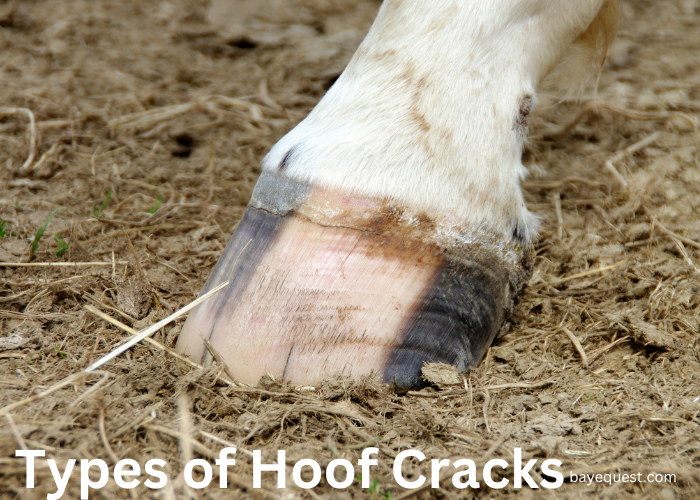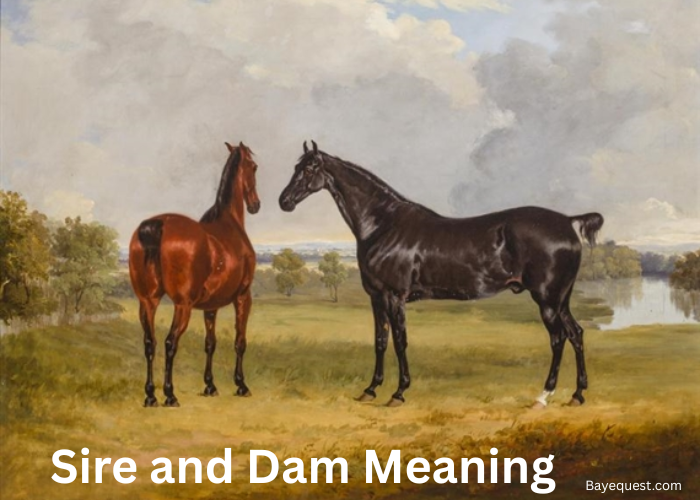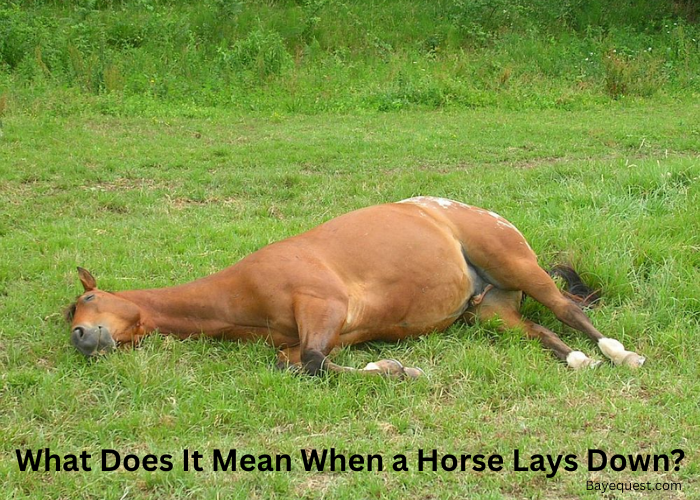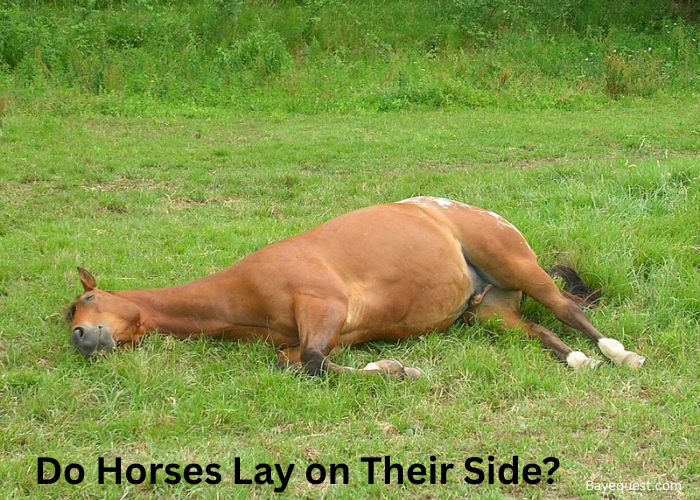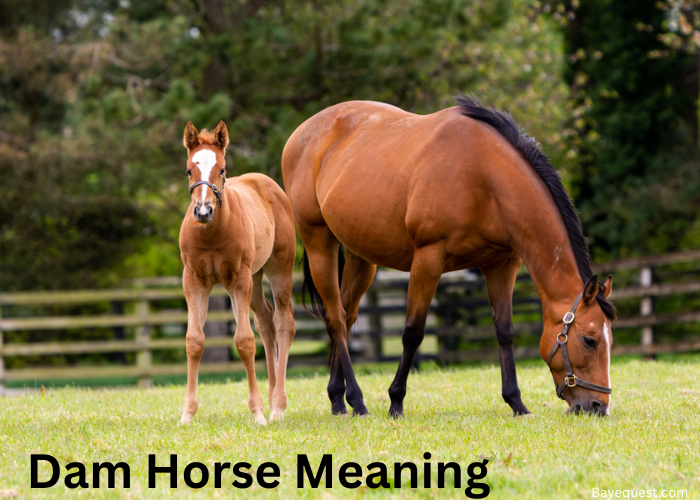Hoof cracks are a common issue for horse owners. They might look minor, but they can lead to serious problems if not addressed.
Different types of cracks need different solutions, and knowing what to look for is key.
From small, surface cracks to deeper ones that affect movement, each crack tells a story about hoof health.
In this guide, we’ll break down the types of hoof cracks and what they mean for your horse.
Keep your horse’s hooves healthy with the right care and attention.
Types of Hoof Cracks: Key Takeaway
- Grass crack
- Sand crack
- Bar crack
- Toe crack
- Heel cracks
- Quarter crack
- Coronary band cracks
- Blowout cracks
- Growth band cracks
Hoof Anatomy
The hoof is a complex structure that plays a vital role in a horse’s movement and overall health.
At the most basic level, it consists of the outer wall, the sole, the frog, and the inner structures that support the horse’s weight and movement.
Each part has a unique function, and they all work together to keep the horse sound and balanced.
The hoof wall is the tough outer layer. It provides protection and helps the horse bear weight.
The wall grows continuously, much like human fingernails, and needs regular trimming to prevent overgrowth or cracking.
The wall also has the ability to absorb shock, which is crucial when the horse moves or jumps.
Beneath the hoof wall is the sole, which covers the bottom of the hoof.
The sole is slightly concave and helps protect the sensitive inner structures from injury.
It doesn’t bear as much weight as the hoof wall but still needs to be kept in good condition to prevent bruising or damage.
The frog is the triangular, rubbery part located in the center of the hoof. It helps with traction and absorbs impact when the horse walks or runs.
The frog also plays a role in circulating blood through the lower leg with every step. A healthy frog is essential for proper hoof function and movement.
Inside the hoof, there are several key structures, including the coffin bone, digital cushion, and laminae.
The coffin bone provides support, while the digital cushion absorbs shock. The laminae attach the hoof wall to the bone, keeping everything connected and stable.
Together, these parts of the hoof form a strong yet flexible structure.
What is a Hoof Crack?
A hoof crack is a break or split in the hoof wall. It can be small and only on the surface, or it can go deeper and cause pain.
Cracks happen for different reasons. Trauma, poor hoof care, and environmental factors like too much moisture or dryness can lead to cracks.
Some cracks run from the top of the hoof down to the bottom. These are called vertical cracks.
Other cracks go across the hoof and are less common.
Taking care of hoof cracks early is important. Proper trimming and care can stop them from getting worse.
Causes of Hoof Cracks
Hoof cracks can develop for many reasons. Let’s break down the main causes to help you prevent them.
Poor foot conformation
Poor foot conformation refers to a structural imbalance in the horse’s hoof.
This can include conditions like flat feet, high heels, or an asymmetrical hoof shape.
When the hoof is not naturally balanced, different parts of the hoof wall bear more weight than others.
Over time, this uneven pressure leads to cracks.
Horses with poor foot conformation are also more likely to develop long-term hoof problems.
Trauma of the coronary band
The coronary band, located at the top of the hoof, is where hoof growth begins.
Trauma to this area can disrupt the hoof’s growth, leading to weak spots in the hoof wall.
Injuries can be caused by kicks, strikes, or cuts that damage the coronary band.
When this area is injured, the hoof may grow unevenly, and cracks are more likely to form.
If the injury is severe, it can affect the entire hoof, and cracks may continue to appear as the hoof grows out.
Pre-existing damage to the laminar corium
The laminar corium is a sensitive tissue inside the hoof that connects the hoof wall to the underlying bone.
Damage to this tissue, often caused by infections such as founder, weakens the structural integrity of the hoof.
Once the laminar corium is compromised, it cannot provide strong support to the hoof wall, making the hoof prone to cracks.
These cracks are usually deeper and more painful than surface-level cracks, and they may require veterinary care to heal.
Short shoes
When a horse’s shoes are too short, they do not cover enough of the hoof, leaving parts of the hoof wall exposed to more stress.
The shoes are supposed to protect the hoof by evenly distributing the weight and absorbing shock.
When the shoes don’t extend far enough back, the hoof wall bears more of the load, especially in areas like the heels.
This increased pressure can weaken the hoof over time and lead to cracks, especially in the quarters or heels.
Focal foot imbalances
Focal foot imbalances occur when specific areas of the hoof take on more weight than others.
For example, if one side of the hoof is higher than the other, the uneven distribution of weight puts excess pressure on the lower side.
Over time, this pressure can lead to cracks in the overburdened areas.
Regular corrective trimming or shoeing can help restore balance to the hoof and prevent cracks from forming.
Exposure to abrasive surfaces
Horses that spend a lot of time on rough or abrasive surfaces, such as gravel or hard-packed dirt, are at a higher risk of developing hoof cracks.
These surfaces can wear down the hoof wall, causing small cracks to form.
Over time, these small cracks can grow deeper, especially if the hoof is exposed to continued friction.
Horses that aren’t properly shod are particularly vulnerable, as their hooves are left unprotected from the constant grinding of these surfaces.
Heavy workloads
Horses that are subjected to heavy workloads, such as pulling heavy loads, intense riding, or jumping, place more strain on their hooves.
This continuous pressure can weaken the hoof wall, particularly if the horse’s hooves are not in optimal condition.
Cracks are more likely to form when the hooves are under constant stress, especially in high-impact areas like the toe or heel.
Regular hoof care and proper shoeing are essential for horses with heavy workloads to avoid cracks.
Extremes in environmental conditions
Both extremely wet and extremely dry conditions can affect hoof health.
In wet environments, hooves become soft and more prone to cracks, as the excess moisture weakens the hoof wall.
In contrast, dry conditions can cause the hoof to become brittle, making it more likely to crack.
Horses exposed to sudden changes from wet to dry conditions are at particular risk, as their hooves may expand and contract too quickly, leading to stress cracks.
Poor diet
A horse’s diet plays a critical role in hoof health. Nutrients such as biotin, methionine, zinc, and calcium are essential for maintaining strong hooves.
A deficiency in these key nutrients can weaken the hoof wall, making it more prone to cracking.
A balanced diet that includes proper hoof supplements can help strengthen the hoof and prevent cracks from forming.
Without proper nutrition, hooves may grow slowly, be soft, or develop cracks more easily.
Lack of exercise
Regular exercise helps stimulate blood flow to the hooves, which is essential for hoof growth and health.
Horses that do not get enough movement may have poor circulation in their hooves, leading to weakened hoof walls.
Additionally, inactivity can cause the hooves to grow unevenly, as natural wear from movement is lacking.
A lack of regular exercise can also contribute to poor foot conformation, which further increases the risk of hoof cracks.
Types of Hoof Cracks
Hoof cracks come in different forms. Understanding their types helps prevent serious issues and maintain hoof health.
Here are some of the types
1. Grass crack
Grass cracks are shallow cracks that usually start from the ground surface of the hoof and extend upward.
They are superficial and don’t penetrate deeply into the hoof wall.
Grass cracks are often caused by environmental factors like dry, brittle hooves or improper trimming.
They are named because they were commonly seen in horses grazing on hard, dry pastures.
While grass cracks are not usually serious, they can worsen over time if not treated or if the hoof condition isn’t improved.
2. Sand crack
Sand cracks are vertical splits that run from the coronary band (the top of the hoof) downward.
Unlike grass cracks, sand cracks usually start at the top of the hoof and can be deeper, sometimes affecting the sensitive inner layers of the hoof.
Sand cracks can be caused by trauma to the coronary band, poor hoof conformation, or improper shoeing.
They often occur in horses that work on sandy or abrasive surfaces, hence the name.
3. Bar crack
Bar cracks occur in the bars of the hoof, which are the inward folds of the hoof wall near the frog.
These cracks are less common but can be quite painful for the horse.
Bar cracks are usually caused by trauma, poor trimming, or improper hoof balance.
They can also result from excessive weight bearing in the area of the bars, especially in horses with unbalanced hooves.
4. Toe crack
A toe crack is a vertical crack that forms at the front of the hoof, in the toe area.
It can develop due to excessive pressure or uneven wear on the front of the hoof, often caused by improper trimming or shoeing.
Toe cracks may also occur when the horse’s hooves are left too long between trims, leading to stress on the hoof wall.
If left untreated, toe cracks can deepen and cause lameness.
5. Heel cracks
Heel cracks develop at the back of the hoof, where the heel is located.
These cracks often result from long, overgrown heels or an imbalance in the hoof.
They can also be caused by the excessive strain placed on the heels, especially in horses with poor hoof conformation or improper trimming.
Horse heel cracks are a concern because they can lead to infection and cause the horse to become lame.
6. Quarter crack
Quarter cracks occur in the side of the hoof wall, between the toe and the heel, in the area known as the “quarter.”
They are often caused by uneven weight distribution, conformation problems, or trauma.
Quarter cracks can be quite deep and painful, as they may extend into the sensitive inner structures of the hoof.
These cracks are challenging to treat, as the area of the quarter bears significant weight with each step the horse takes.
7. Coronary band cracks
Coronary band cracks are cracks that start at the top of the hoof, near the coronary band, and move downward.
They are often caused by direct trauma to the coronary band, such as a cut or injury.
Damage to the coronary band affects hoof growth, leading to weak spots that are prone to cracking.
These cracks can extend deeper into the hoof if not treated early.
The crack’s location near the coronary band can disrupt the hoof’s ability to grow evenly.
8. Blowout cracks
Blowout cracks are usually horizontal cracks that form as a result of an abscess bursting through the hoof wall.
When a hoof abscess builds up pressure inside the hoof, it may eventually “blow out” at the weakest point, creating a horizontal crack.
These cracks occur in the heel or quarter areas and are often accompanied by pain and lameness before the abscess ruptures.
Once the abscess drains, the crack can heal, but the area may remain weak until the hoof fully regrows.
9. Growth band cracks
Growth band cracks are horizontal cracks that develop at the growth rings of the hoof, often due to an interruption in hoof growth.
This interruption could be caused by illness, injury, poor nutrition, or severe stress.
The crack follows the line of the growth band, which appears as a distinct line or ring on the hoof.
While these cracks usually aren’t deep, they can indicate underlying health problems that affect the horse’s overall hoof health.
Read also: Hoof Problems in Foals.
Diagnosis of Hoof Cracks in Horses
Diagnosing hoof cracks in horses involves a thorough examination of the hoof.
The first step is usually a visual inspection by a farrier or veterinarian.
They will look at the location, depth, and direction of the crack.
This helps determine whether the crack is superficial or if it extends deeper into the hoof.
Next, the examiner may use hoof testers. These are tools that apply pressure to different parts of the hoof to check for pain or sensitivity.
If the horse reacts to pressure near the crack, it may indicate that the crack has reached sensitive tissues.
In more serious cases, the veterinarian may take X-rays.
This helps them see if the crack has affected the internal structures of the hoof, like the coffin bone or laminae.
X-rays also help determine if there are any underlying infections or abscesses that might be contributing to the crack.
Sometimes, a veterinarian will look for signs of infection, such as swelling, heat, or discharge near the crack.
If an infection is suspected, they might recommend cleaning the crack and applying antiseptics, or in more severe cases, prescribing antibiotics.
See also: Degloved Horse Hoof.
How to Treat Hoof Cracks
Treating hoof cracks requires proper care and attention to prevent them from worsening.
The treatment approach depends on the severity and type of crack. Here’s how hoof cracks can be treated:
1. Regular trimming and balancing
The first step in treating most hoof cracks is ensuring the hoof is properly trimmed and balanced.
An unbalanced hoof can put uneven pressure on certain areas, worsening the crack.
A skilled farrier will trim the hoof to restore balance, which helps distribute the horse’s weight evenly and reduces stress on the crack.
Regular trimming every 4 to 6 weeks can prevent cracks from getting deeper.
2. Corrective shoeing
For deeper or more severe cracks, corrective shoeing may be necessary.
Special shoes, such as heart bar shoes or egg bar shoes, can be applied to relieve pressure from the affected area.
These shoes provide additional support to the hoof and help stabilize the crack while it heals.
In some cases, clips or special shoeing techniques are used to close the crack or prevent further splitting.
Related read: How Often Should Horses be Reshoed?
3. Filling or stabilizing the crack
For serious cracks, the farrier or veterinarian may use materials to fill the crack.
This prevents dirt, bacteria, and debris from entering the crack, which could lead to infection.
Crack fillers or hoof repair compounds are often used to stabilize the hoof wall and allow the crack to heal from the inside out.
In severe cases, wire or lacing may be used to pull the sides of the crack together, helping it heal more effectively.
4. Treating infections
If the crack is infected or causing pain, the infection needs to be addressed.
The crack may need to be cleaned and disinfected regularly.
In some cases, antibiotics or antiseptic treatments are applied to the hoof to clear up the infection.
Abscesses or other complications near the crack may need to be drained by a veterinarian.
5. Moisturizing the hoof
Dry and brittle hooves are more prone to cracking.
Applying hoof moisturizers or conditioners can help soften the hoof and prevent further cracks from forming.
This is more useful in dry climates or seasons when the hooves tend to lose moisture.
6. Rest and reduced workload
For serious or painful hoof cracks, reducing the horse’s workload is crucial.
Horses with deep cracks or painful infections may need to be rested to allow the hoof to heal properly.
Limiting the horse’s activity and avoiding hard or abrasive surfaces can prevent the crack from worsening.
The horse’s workload can gradually be increased once the hoof begins to heal.
7. Nutritional support
Proper nutrition plays an important role in hoof health.
Adding supplements like biotin, zinc, and methionine can promote strong hoof growth and prevent future cracks.
These nutrients help strengthen the hoof wall and improve the overall structure of the hoof.
Ensuring the horse has a well-balanced diet can make a big difference in the long-term health of the hooves.
8. Long-term hoof care
Once the crack has healed, maintain a regular hoof care routine to prevent new cracks from forming.
Regular trimming, balanced shoeing, and good nutrition should continue even after treatment.
How to Prevent Hoof Cracks
Preventing hoof cracks starts with regular hoof care.
Always trim horse hooves every 4 to 6 weeks to maintain healthy hooves and ensure even weight distribution, reducing the risk of cracks.
A skilled farrier will shape the hoof correctly, preventing excess pressure on any area.
Proper nutrition is also key. Horses need a balanced diet with nutrients like biotin, zinc, and methionine to support strong hoof growth.
Moisturizing the hooves helps prevent cracks, especially in dry conditions.
Regularly applying a hoof conditioner keeps the hooves flexible and less prone to splitting. This is crucial during dry seasons or in areas with low humidity.
Minimizing exposure to extreme environments also reduces the risk.
Wet conditions make hooves too soft, while dry conditions make them brittle. Managing your horse’s environment helps protect the hooves.
Regular exercise promotes healthy blood circulation, which supports hoof growth.
However, avoid working your horse on rough, abrasive surfaces that can wear down hooves and cause cracks.
In summary, regular trimming, balanced nutrition, moisturization, and proper exercise are vital to keeping hooves healthy and preventing cracks.
Heel Cracks in Horses: Conclusion
Hoof cracks might seem small, but they can turn into big problems if ignored.
Regular hoof care, a balanced diet, and proper attention to your horse’s environment can make all the difference.
With the right steps, you can keep your horse’s hooves strong, healthy, and crack-free.
Stay ahead of the game, and your horse will thank you with every smooth, confident step.




